Text

☆ THE BEATLES BY PETER LAURIE (1963) ☆
"My father had sent me a newspaper clipping of a new pop group from Liverpool. Being from Lancashire himself, he'd been intrigued by them, though he was the least musical of men.
I showed this article on the Beatles to Mrs. [Diana] Vreeland [US Vogue Editor]: "They're too adorable, get them photographed immediately!"
She sent me to England to arrange it.
The resulting portrait, taken by Peter Laurie after a gig in Northampton, was the first photograph printed of the Beatles in any American magazine.
In those days the fans threw flowers, rather than bottles and knickers, onto the stage.
I gathered these up into posies and passed them to the boys.
Holding them, these wild young cannibals sat there looking as innocent as Victorian bridesmaids."
"REDEEMING FEATURES: A MEMOIR" by Nicholas Haslam
44 notes
·
View notes
Text

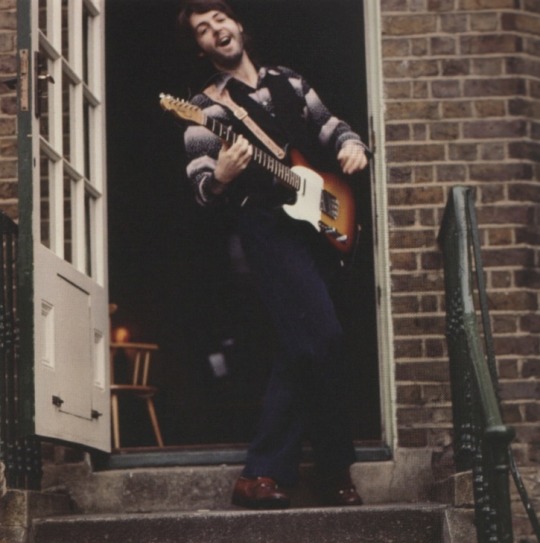


Paul playing guitar at home in London, April 1969
189 notes
·
View notes
Text
John had a very close relationship to Paul on a different level than Stuart. His relationship to Paul was music. He admired and loved Paul.
- Astrid Kirchherr, interviewed in 1996.
42 notes
·
View notes
Text
The Beatles Live at Shea Stadium (15 August 1965)
85 notes
·
View notes
Audio
John Lennon’s parody of Bob Dylan.
“Sometimes I wish I was just George Harrison, you know, get all the answers. Oh my god. Oh my god”
6K notes
·
View notes
Photo




When asked about the Magical Mystery Tour
5K notes
·
View notes
Text

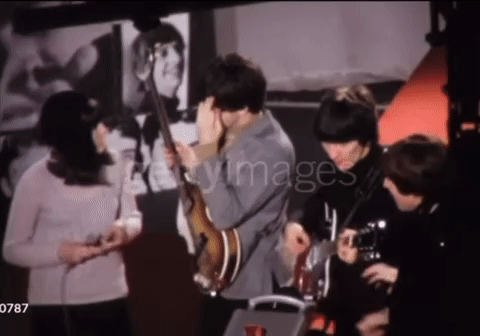

John Lennon and George Harrison play the fool while Paul McCartney chats to host Cathy McGowan during rehearsals for The Beatles' second appearance on Ready, Steady, Go!, 20th March 1964.
92 notes
·
View notes
Text
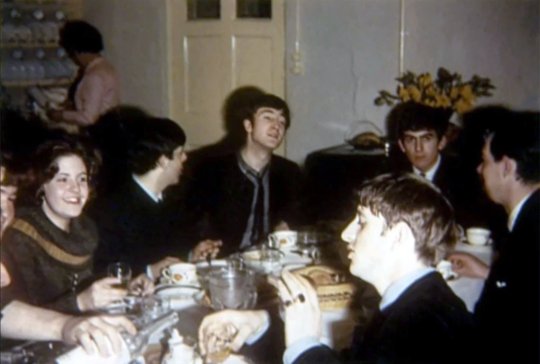

The Beatles at Stowe School in Buckinghamshire, England | 4 April 1963
92 notes
·
View notes
Text
teddy boy paul appreciation post
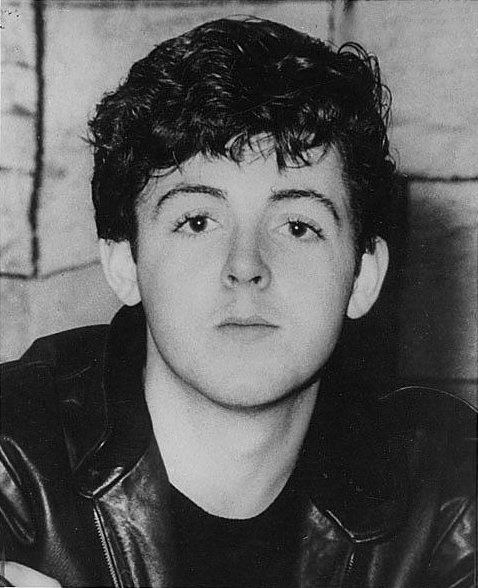




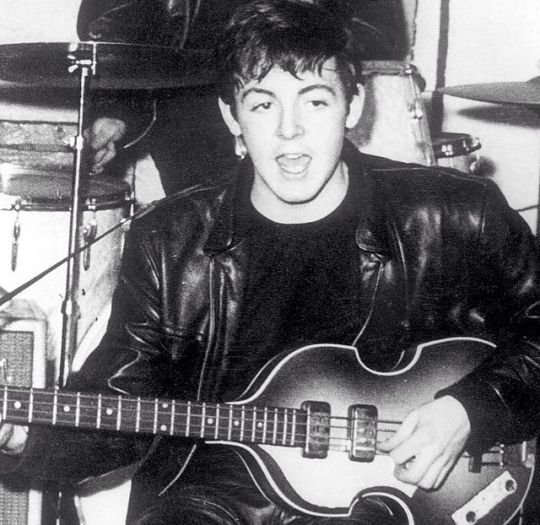
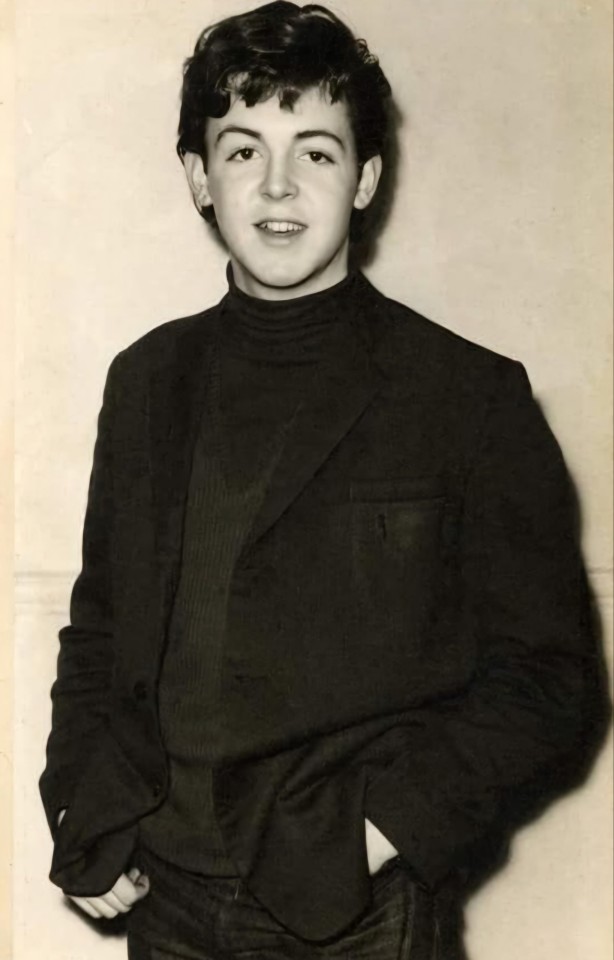
508 notes
·
View notes
Photo

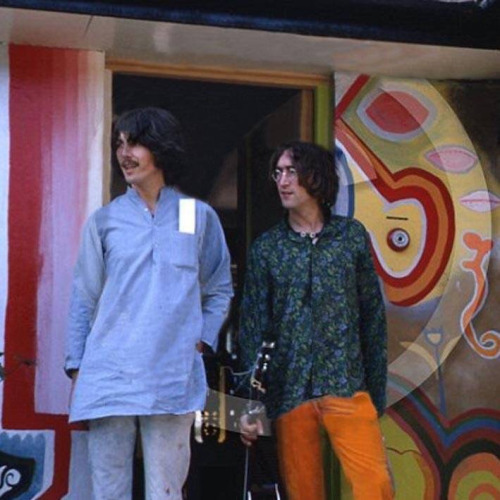
John & George at Kinfauns in May of 1968 taken by then 19 year old fan, Michael Herring who had earlier stopped by John’s home, was invited in and then accompanied John to see George at KInfauns. Photo Source: Facebook
“George looked up and said, “Who’s this, then?”’ Mr Herring, 67, recalled. ‘John said, “This is Michael. He’s an artist. I found him in me garden.” - Daily Mail, 7 March 2015
687 notes
·
View notes
Text

The Beatles' interview at the Hilton Hotel on June 30, 1966.
188 notes
·
View notes
Note
I'd be curious to hear your Ob-la-di Ob-la-da take lol
I claimed Ob-la-di Ob-la-da as a political song. No, I'm not kidding.
Obviously, Ob-la-di Ob-la-da isn't a protest song. It's a perky ska-style number about the happy, everyday life of an immigrant family. And it was released in 1968, when immigration had just become the most inflammatory topic in British politics.
In spring 1968, the UK government proposed a new Race Relations bill, making it illegal to refuse housing, employment, or public services to anyone on the grounds of race or national origin. It was a response to racism, particularly against recent immigrants, especially those from the Caribbean.
Cue a lot more racism, most notoriously from politician Enoch Powell, who gave what is still commonly referred to today as the "Rivers of blood" speech. Powell ranted about sending "the immigrant and immigrant-descended population" back to the countries they or their families had once come from. He was particularly freaked out by the idea that, having come to Britain, people would settle down and - horrors - have babies, eventually outnumbering the white population. Powell was sacked by his party the next day, but he sparked a horrible wave of racist protest and abuse.
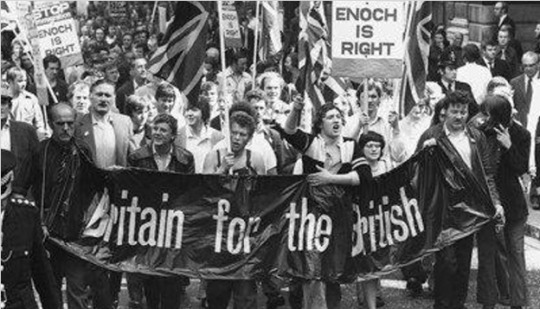
All this was brewing over the summer, as The Beatles worked on the White Album, and on this song. What is Ob-la-di Ob-la-da about? It's an everyday love story. The ska style frames Desmond and Molly as Jamaican - which, in a British context, strongly suggests that they're immigrants. The song builds a happy ending out of exactly the things that racists like Powell were terrified that immigrants would do. They work, get married, and have children, who grow up and help with the family business. Life going on, happy ever after.
The Beatles were certainly aware of the tensions sparked by Powell, immigration and the Race Relations Act; they were still talking about it, and trying to write a protest song about it, in the Get Back sessions in January 1969. Ob-la-di Ob-la-da doesn't talk directly about any of that. Its subjects - work, home, children - are the sort of thing that 1970s rock journalists would put down as Paul's normie bourgeois sensibilities.
But normie is where most people live. The song presents Desmond and Molly as deeply relatable. It assumes that their happy ending is something everyone can root for and sing along with. That is not an apolitical act, particularly not in Britain in 1968.
youtube
And people did sing along, in their millions. Ob-la-di was staggeringly popular. The Beatles didn't release it as a single in the UK or the US (though it topped charts in Australia, Japan and Europe). There were multiple competing cover versions. One by the band Marmalade went to No 1 in Britain, and sold about a million copies. Paul's own favourite cover was by The Bedrocks, whose members were all first-generation immigrants from the Caribbean.
(Obviously, there are other questions here about race, music, and appropriation; The Beatles, and most of the artists doing cover versions, are white people singing black music. Hello, history of western popular music.)
As I said, this isn't a protest song. But it has been sung in protest. @beatleshistoryblog found this great footage from a Women's March in London in 1971. Just listen to the first seconds: la la la la life goes on.
youtube
82 notes
·
View notes
Text
I was looking through my drafts and found this compilation of quotes I put together of Beatle girls talking about other Beatle girls. It's probably not totally comprehensive, but I thought some people might find it interesting.
Cyn + Mo
Far from being a shy little thing, Maureen was talkative, full of laughter and great fun: we all liked her enormously and thought she was good for Ringo.
All of the Beatles’ women got on with each other, but Maureen, who was one of the most down-to-earth, honest people I ever knew, became my closest friend. After their son Zak was born in September, seven months after the wedding, she and I used to go up to Knightsbridge to shop. Anthony would drop us off and we’d do the rounds of Harrods, Harvey Nichols and the designer shops in between, then stop for lunch in a smart little bistro. We’d buy cute little outfits for our sons and we were always on the lookout for something different or special for the men. We loved to surprise them with a psychedelic shirt, a piece of ethnic jewellery, or I would buy John a new plectrum for his guitar. John always loved prezzies, as he called them. No matter how small they were, he’d be delighted and I loved looking for things to surprise him.
Much as Maureen and I enjoyed our outings, she always made sure she was at home for Ringo when he came in. Such was her devotion to him that she would stay up sometimes until four in the morning to greet him with a home-cooked meal. She wanted him to feel loved and cared for and, like me, she had been brought up in a family where women did the caring and nurturing while men provided.
We often went over to their house and hung out with them, it was always party time at the Starkeys’. Ringo was gregarious and fun-loving, a clown and a joker with an infectious laugh. Together, he and Maureen made an irresistible double act, both extrovert and uninhibited. Ringo had installed a replica pub in their front room, which he called the Flying Cow. It had a counter and till, tankards, mirrored walls and even a pool table. He’d nip behind the bar to serve us all drinks, while Maureen supplied us with endless plates of food. It was a cosy, comfortable house with what felt like the ultimate luxury at the time: a TV – usually switched on – in every room.
They had large grounds, in which Ringo had built in a go-kart track. He and John would race the go-karts or play pool while Maureen and I chatted over a cup of tea or took Zak and Julian for a walk. Ringo’s other passion was making his own short films. He had lots of equipment and loved to experiment, so after the nanny had taken over Zak and Julian we’d watch his latest movie. One was a fifteen-minute study of Maureen’s face. Innovative, perhaps, but not the most riveting entertainment.
Cynthia Lennon, John
Cyn + Jane
Jane was different from the girls Paul had been out with previously. The daughter of a psychiatrist father and a music-teacher mother, she was highly intelligent and cultured. She had a strong inner confidence, with a maturity and grace way beyond her years.
Paul stayed for a while. He told me that John was bringing Yoko to recording sessions, which he, George and Ringo hated. Paul had broken up with Jane Asher a couple of weeks after John had left me. I was sorry because I’d really liked Jane.
Cynthia Lennon, John
Cyn + Pattie
I liked Cynthia, but of all the Beatle wives and girlfriends I found her the most difficult to make friends with. She and I came from such different backgrounds; she had no career, she was a young mother, and we had no point of reference apart from our attachment to a Beatle. She wasn’t like my friends, who enjoyed a giggle and some fun: she was rather serious, and often, I thought, behaved more like John’s mother than his wife. I tended to leave her to her own devices but invited her to join me for shopping. I think she felt a bit out of her depth in the smart, sophisticated circles in which the Beatles were now moving in London. And I don’t think it helped that John thought I looked like Brigitte Bardot, or that I got on so well with him. There was a rumor—I don’t know where it came from—that John and I had an affair, and I suppose Cynthia may have believed there was something in it. It was completely untrue: we never had an affair. I wouldn’t have dreamed of it and neither, I am sure, would John.
Pattie Boyd, Wonderful Tonight: George Harrison, Eric Clapton, and Me
Meanwhile George, who had just turned twenty-one, had met a young model called Patti Boyd and fallen in love. Pattie had been given a part in A Hard Day's Night, playing a schoolgirl, because she had appeared in a successful crisps advertisement -- she was known as the Smith's Crisps girl. She was blonde, beautiful, and a sophisticated Londoner, like Jane Asher. But, like the rest of us Beatle girls, she was friendly, too, and easy to get on with.
Patti and I were becoming close friends. I admired her gorgeous figure and perfect fashion sense, and I think she enjoyed the company of someone who’d been with the Beatles from the beginning and knew the ropes.
Cynthia Lennon, John
"George has a lot with the others that I can never know about. Nobody, not even the wives, can break through it or even comprehend it. It did used to hurt me at first, as I slowly began to learn there was a part I could never be part of. Cyn talked to me about it."
[Pattie speaking] "It's not so bad these days, but it happens. Cyn was attacked not long ago in the street. Some girl kicked her in the legs and said she had to leave John alone, or else. Isn't it amazing, after all the years that John and Cyn have been married?"
[Pattie speaking] "Some people do understand. If they've been developing a lot themselves, growing up more, they know what it's all about. Cyn was very helpful at first, telling me what to do. That was when we thought of the boutique."
Cyn now and again would like to try something new, to have a job, perhaps use her art-college training in some way. She and Pattie, George's wife, did discuss the idea once of opening a boutique together in Esher, but it never came to anything.
Hunter Davies, The Beatles
Mo + Jane
I got to know Jane as well during that trip. While Paul and Richy were off horsing around, Jane and I chatted quite a bit. She’s such an intelligent person and I thought them quite an odd couple at first. Paul is such an assertive fellow (you know) he knows what he wants and Jane is that way too. I often wondered to meself how they ever stayed together as long as they did (you know).
Maureen interviewed by Maurice Devereux for Le Chroniqueur (July 1988)
Mo + Pattie
Again, she and I had little in common but she was jolly and friendly, more relaxed than Cynthia. We got on but I felt there was definitely a north-south divide among the wives and girlfriends. And I had the definite impression that the girls from the north felt they had a prior claim to “the boys.”
The final straw was his affair with Maureen Starr, Ringo’s wife. She was the last person I would have expected to stab me in the back, but she did.
Pattie Boyd, Wonderful Tonight: George Harrison, Eric Clapton, and Me
Pattie + Jane
Jane Asher was the girlfriend with whom I felt most at home, but because we both had heavy work commitments she was also the one I saw least. She came from a professional family, had grown up in London and, like me, had been privately educated. The family lived in Wimpole Street; her father was a psychiatrist and her mother a music teacher—her brother Peter became half of the pop duo Peter and Gordon. She was three years younger than me but we got on well and I’ve always been pleased to see her whenever we’ve met.
Pattie Boyd, Wonderful Tonight: George Harrison, Eric Clapton, and Me
BONUS: Mo on Linda + Yoko
I always thought [Yoko] strange. I mean she would always interrupt the lads when they were working or do strange things without any reason whatsoever. I was there when John brought the bed, and said something about wanting Yoko to be there. I asked Richy about this and he just shook his head in disbelief. I often wondered how they all put up with her. Even Richy would come home and tell me all these strange stories about her. He once told me about her moaning into John’s microphone while they were recording a song and how the two of them would make-out during takes. I always avoided her in the studio for those reasons. She was just too strange for me.
Q: What was it like to sit in the studio with John, Paul and George?
A: It was like watching a couple of actors rehearsing a scene in a movie (laughs). I would sit there with a cup of coffee in my hand and watch them for a while or maybe gossip with Linda [McCartney] or Mal [Evans]. When I did watch them, I always thought to meself, so this is what he’s been doing for the last six years! (laughs) I sometimes felt like a fly on the wall, but I knew that I had to be the luckiest fly in the world. Pattie [Harrison] would sometimes be there, but she would always leave early.
Maureen interviewed by Maurice Devereux for Le Chroniqueur (July 1988)
Can't really find any proper quotes from Pattie about Yoko or Linda. She mentions both in her book without much judgment and there are pictures of her with both of them throughout the years so they probably got on okay. I don't think Jane has ever been in the same room as either Linda or Yoko. Same with Cyn and Linda. Cyn's thoughts on Yoko are probably well-established at this point.
104 notes
·
View notes
Text


John Lennon, Paul McCartney and host Keith Fordyce during rehearsals for The Beatles' first appearance on Ready, Steady, Go!, 4th October 1963. Part 10 (part 1, part 2, part 3, part 4, part 5, part 6, part 7, part 9)
127 notes
·
View notes
Text

One interesting part in John’s manuscript of Paul’s affidavit is his note in the margins regarding the section where Paul talks about the growing musical differences between him and John. In particular, John underlines Paul’s statement that “[John] he was no longer interested in the performance of songs which he had not written himself.” John counters this comment with “Paul was guilty of this for years. Witness ‘let it be’ clip.”
The ‘Get Back’ clips have shown us that not all was dire between them at this time. But I do believe John’s comment is valid and crucial in order to understand the feelings wrt. the unity (or the lack thereof) felt within the group and how that played into the role dynamics of the band at this point. At the very least, it indicates to me that a lot more was going on than just simply John being completely checked out from the group in the later years.
60 notes
·
View notes
